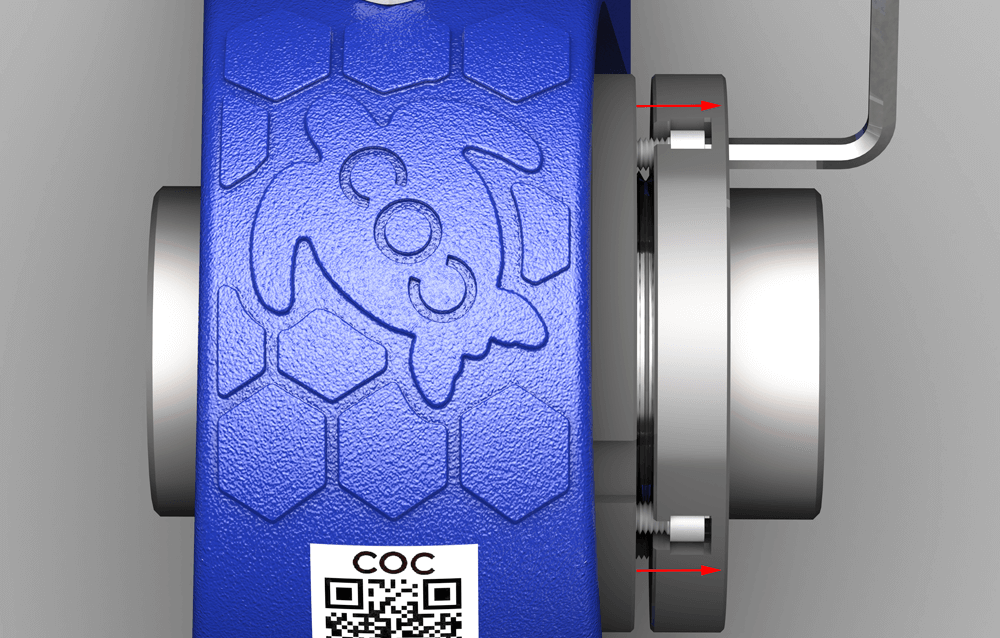

CX2SAF16-211 (E) LB7

MOUNT:
1. Check all cap screws are freed.
2. Tighten cap screws in a star pattern as seen above. Repeat.
3. When using a torque wrench, first tighten each cap screw to 50 percent of the specified torque value, and then tighten them again to the full 100 percent torque value. Make sure to use a star pattern both times.
Note: The adapter sleeve needs to be pulled to lock and we use the left-hand cap screws to turn clockwise to pull. When you tighten the cap screws, the gap between two nuts gets bigger and the adapter sleeve is moving towards the outside. The outside nut should move parallel to the inside nut to avoid the cap screws twisting and getting damaged. This is why the cap screws are tightened in a star pattern and repeated. You may need to repeat this several times to tighten all the cap screws perfectly, this is a very standard way as seen with automobile wheels.

DISMOUNT:
1. Loosen all cap screws unitl they are freed.
2. Turn cap screws counterclockwise in a star pattern and repeat until dismounted.
Note: When you want to unlock CROSSLOC™, loosening and turning counterclockwise is needed. They are the same left rotation but turning counterclockwise does not loosen. Loosen all cap screws to be freed first. Then you need to push the outside nut to release the adapter sleeve from the inner ring. Turn the cap screws counterclockwise in a star pattern and repeat until dismounted. It’s same as locking and the outside nut should move parallelly.

Recommended Shaft Tolerance : -0.004 in. / -0.102 mm
When the shaft is smaller than above, you can try below.
1. Loosen the CROSSLOC™ two nut locking system and take off from the unit. (Take care not to change the clearance between the nuts.)
2. Push the adapter sleeve from the back of bearing by hitting with the driver and hammer.
3. Make sure the shaft can slide through the bore of bearing easily.
4. Put the CROSSLOC™ two nut locking system back on the bearing. When two nut system won't rotate any further, hit with the driver and hammer to turn and tighten.
FIX TO EXPANSION
When your application needs to be able to accommodate thermal expansion of the shafting, use only one fixed bearing on each shaft.
By simply moving a snap ring on the back of the unit the bearing can easily be converted from non-expansion to expansion or vice versa.